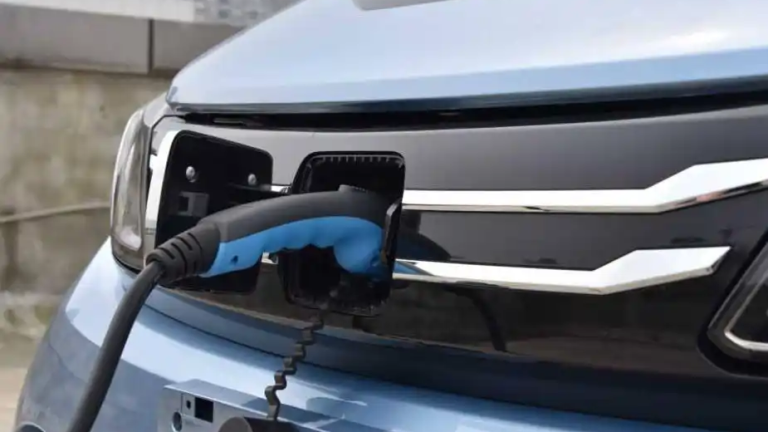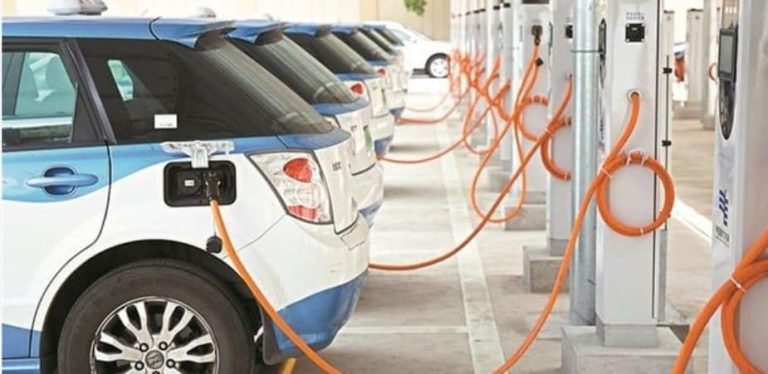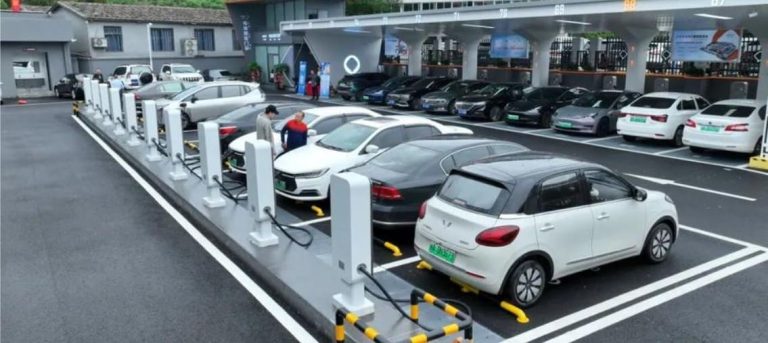What is the difference between ac and dc ev charging?

What Is the Difference Between AC and DC EV Charging?
The fundamental difference between AC (alternating current) and DC (direct current) EV charging lies in where the electrical conversion happens: AC charging relies on the vehicle’s onboard converter to transform grid power into battery-ready DC electricity, resulting in slower charging, while DC fast charging bypasses the vehicle’s system by converting grid AC to DC externally, enabling rapid power delivery directly to the battery . This core distinction shapes everything from charging speed and infrastructure costs to real-world usability and long-term battery health.
Core Technical Principles: Conversion Location Defines Everything
Batteries for electric cars only store direct current (DC) energy. On the other hand, power is delivered by the electrical grid using alternating current (AC). The main difference between these two charging techniques is how and where this AC-to-DC conversion takes place.
The vehicle receives unaltered grid AC power from AC chargers. The onboard charger (OBC) is a component that performs the crucial conversion work inside the vehicle. Every EV has an OBC that serves as a translator, transforming incoming AC power into DC electricity that the battery can store. The design of the vehicle determines its capacity, which normally caps at 11 kW for standard cars and up to 22 kW for luxury models. The vehicle’s OBC functions as a bottleneck, limiting charging speed to its maximum rated power even if you connect an AC charger with a higher output.
By relocating the conversion process outside of the car, DC fast chargers remove this bottleneck. These stations convert grid AC into high-voltage DC on-site using robust internal rectifiers and power conversion units. Bypassing the slower, capacity-limited OBC entirely, this pre-converted DC electricity enters the EV’s battery. DC systems can provide significantly higher power levels, ranging from 50 kW at entry-level public stations to 480 kW with state-of-the-art ultra-rapid chargers, because the conversion takes place in the charging station, which is unrestricted by the size or weight of the vehicle.
Charging Speed: Hours vs. Minutes
For drivers, charging time is the most obvious difference. Speed changes where and how we use EVs; it’s not just about convenience.
Hours are used to measure AC charging, which corresponds to longer stops like overnight parking. About 40 to 50 km of range can be added per hour with a standard 7 kW home or public AC charger. It takes 8 to 10 hours to fully charge a mid-size EV with a 60 kWh battery from empty, making it ideal for overnight use at home or charging at work during an 8-hour shift. This could be reduced to three to four hours with even more powerful 22 kW AC chargers (which need three-phase power), but few cars can support that rate, and installation costs increase significantly.
The timescale for DC fast charging is drastically different and is frequently expressed in minutes. While 120-150 kW units take 15 to 20 minutes for an 80% charge, a 50 kW public DC charger can provide 200 to 300 km of range in 30 minutes. This is further enhanced by new ultra-rapid 350 kW stations, which add 400 km of range in less than 15 minutes. Because of its speed, DC is necessary for urgent top-ups, taxi fleets, and highway travel. Two factors, however, limit these peak speeds: not all EVs can withstand the highest power rates, and battery management systems slow charging above 80% to preserve battery health.
Design, Cost, and Installation: Complexity vs. Simplicity
AC chargers are superior due to their affordability and ease of use. A control board, safety relays, and a charging cable are the simple parts of a basic home air conditioner, which is frequently no bigger than a shoebox. Similar to an electric oven or clothes dryer, installation usually only requires a 220V circuit, and the hardware costs between ¥1,000 and ¥3,000, plus ¥2,000 to ¥5,000 for the electrician. Because of this, curbside installations, garages, and apartments can all benefit from AC charging.
DC fast chargers look like pieces of industrial equipment. They use powerful rectifiers, transformers, sophisticated cooling systems, and communication modules that communicate directly with the car’s battery management system in order to manage massive power loads. Concrete foundations are necessary for a single 150 kW unit, which can weigh more than 500 kg. They require three-phase industrial-grade power lines with voltages of 380V or higher, which frequently calls for specialized transformers and grid upgrades. This complexity is reflected in the overall costs, which for a 60 kW DC station start at about ¥50,000 for hardware alone and can reach ¥100,000 to ¥300,000 for full installation after electrical work and permits.
Where Each Excels: Matching Chargers to Real-World Needs
Anywhere cars park for hours, AC charging is the norm. Its stronghold is the home; overnight charging guarantees a “full tank” each morning without the need for extra travel. AC is also preferred in workplaces, hotels, and shopping centers because it allows drivers to refuel while engaged in other activities. AC chargers scale effectively for these high-volume, long-dwell locations because they are less expensive to purchase and install. Crucially, all EVs are capable of AC charging, which makes it a universal solution.
DC charging targets mobility and urgency. Highway rest stops deploy DC stations because drivers pause briefly and need maximum range quickly. Urban quick-service hubs (near coffee shops or convenience stores) use DC to attract drivers seeking 15–30 minute top-ups. Taxis, delivery vans, and ride-sharing fleets rely on DC to minimize downtime—every extra minute charging cuts into earnings. However, limited availability, higher costs per session, and grid strain prevent DC from replacing AC in everyday settings .
Battery Health: The Long-Term Trade-Off
Battery wear is accelerated by frequent DC fast charging. Lithium ions are forced to flow quickly through battery cells during high-power charging, producing heat. Excessive heat damages electrodes and electrolytes over time, which may result in premature capacity loss. According to one study, taxis that only used DC charging saw a 15% capacity decline over a two-year period.
AC slow charging is kinder. Longer durations and lower currents help maintain the long-term health of batteries by preventing temperature spikes. The majority of manufacturers advise using AC as the main charging method and saving DC for emergencies or trips. Although DC risks are reduced by modern battery thermal management systems, the adage “slow for daily, fast for travel” is still prudent.
Compatibility and Future Evolution
Standardized connectors such as the Type 2 (European) and GB/T (Chinese) plugs allow for nearly universal compatibility with AC charging. No adapters are required to use any AC station with an EV.
DC charging is dispersed. Although GB/T and CCS (Combined Charging System) standards are widely used, Tesla’s Supercharger network employs proprietary connectors (although adapters are becoming more common). Vehicle compatibility also varies; newer 800V-platform cars (like the Hyundai Ioniq 5 and Porsche Taycan) can handle 350 kW of DC, while older or less expensive EVs may only be able to handle 50 kW. Prior to depending on ultra-fast stations, always verify the maximum DC rate of your EV.
Looking ahead, AC chargers are evolving toward smarter integration—linking with home solar panels or grid demand-response programs to optimize costs and renewable usage. DC technology pushes toward extreme speeds: 800V systems, liquid-cooled cables, and 600+ kW prototypes aim for “gas station”-like convenience. Hybrid solutions like battery-buffered charging stations also emerge, allowing DC fast charging without grid upgrades .
Choosing Wisely: AC or DC?
| Scenario | Recommended Charger Type | Why? |
|---|---|---|
| Home garage/parking | AC | Cost-effective, battery-friendly, leverages overnight downtime |
| Workplace/daytime parking | AC | Matches 8+ hour stops; lower infrastructure costs |
| Highway travel | DC | Adds 300+ km range in 20–30 minutes during breaks |
| Fleet/taxi operations | DC | Minimizes vehicle downtime; critical for high-utilization vehicles |
| Emergency top-up | DC | Quick boost when range is critically low |
AC and DC charging are complementary tools rather than competitors. AC fits in with the routines of everyday life, where money is tight and time is plentiful. DC transforms long journeys and business operations by enabling freedom beyond city limits. DC’s role will increase as battery technology advances and ultra-fast charging becomes more widespread, but AC’s accessibility and ease of use guarantee its position as the cornerstone of EV ownership. The golden rule is in effect for the time being: Charge slow when you can; charge fast when you must.
Final Tip: If installing home charging, choose AC unless you drive exceptionally high daily distances or operate a fleet. For everyone else, DC remains best as a public resource for travel—not a home appliance.





































































































































